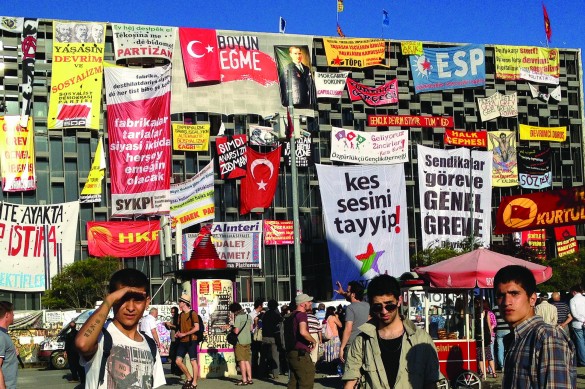Halil Altindere
Halil Altindere
March 2014

Taksim Square, June 2013
Historically and culturally, Taksim Square is Istanbul’s beating heart, the center of the city; a meeting point both for tourists and locals. On May 1 each year, International Worker’s Day, hundreds of thousands gather in the square and march down Istiklal Street waving their flags and banners. Since the 1970s, Taksim Square has been a platform for people for protesting, and the empty façade of the AKM Cultural Center became a canvas for protesters’ banners and posters. The square was also the site of the 1977 Taksim Square Massacre, when several political groups clashed leaving thirty-four dead and many others injured.
On May 31, 2013, when a few of Gezi parks’ trees were cut down and the police attacked the peaceful protesters, they put up banners against the government and their urban ‘regeneration’ project on the façade of the AKM. The neighborhood of Sulukule, which for six centuries hosted the Roma population of the city, had already been demolished in 2006 as a part of this urban transformation project. The kids of Sulukule, who named their hip-hop group Tahribad-ı Isyan (Rebellion or Destruction), voiced the anger, resistance and hope not only of themselves but of the people of Istanbul. In this photo, their mouths are shut, but the AKM’s façade speaks out loud.